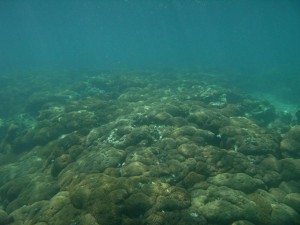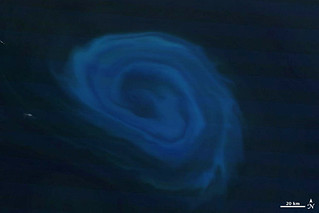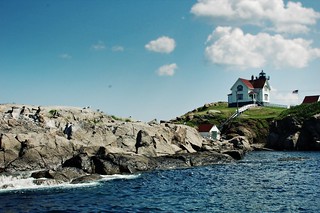Posts
The Constitution, Climate Change, and What Just Happened in Cuba
/in Conservation, Cuba, Cuba Research & Conservation, Featured, Ocean Doctor's Reflections/by Ocean DoctorOcean Doctor president, Dr. David E. Guggenheim, provides an end-of-the-year 2018 update on our work in Cuba, now in its 19th year, and why Cuba is so critical in a global race to save coral reefs in the Caribbean. Our work is urgent, difficult and important and we need your help. Please consider joining our efforts and supporting our work with your donation. Our warmest wishes to you and yours for a joyous and peaceful Holiday Season!
New York Times Features Ocean Doctor’s Work in Cuba’s Isle of Youth
/in Conservation, Cuba, Cuba Research & Conservation, Featured/by Ocean DoctorPBS NewsHour Features Ocean Doctor’s Work in Cuba
/in Conservation, Cuba, Cuba Research & Conservation, Featured/by Ocean DoctorPeople’s Climate March 2017 – Washington, DC: Photo Gallery
/in Conservation, Featured/by Ocean DoctorResearchers Discover Planet’s Northernmost Coral Reef
/in Ocean Newswire/by Ocean Doctor
Researchers have discovered the world’s northermost coral reefs off Japan’s Tsushima Island (Image: Kaoru Sugihara)
Coral reefs are typically found in the warm, clear waters of the tropics and subtropics. Researchers in Japan have recently discovered a coral reef far north of any previously discovered on the planet, off the coast of Japan’s Tsushima Island at 34 degrees north latitude. As a reference, this would put the reef north of the city of Atlanta, Georgia. While cold water and deep water corals are found in polar regions, the types of reef-building corals discovered in Japan are generally much more sensitive to cold water and to cloudy or turbid waters, making this discovery all the more remarkable, especially in light of winter water temperatures of 13 degrees Celsius (55 degrees Fahrenheit), considered extremely low and most often fatal to most coral reefs. Read more
Where Mercury in Fish Comes From and What Regulators are Doing About it
/in Ocean Newswire/by Ocean DoctorMercury in fish? Much of it comes from the sky. Coal-fired power plants emit tons of the toxic heavy metal into the atmosphere where it travels hundreds of miles before depositing on the surface of lakes, rivers and the oceans, where it is ingested and gradually works its way up to the top of the food chain where it becomes highly-concentrated in the flesh of the ocean’s predators, such as sharks, tunas, and dolphins.
The EPA issued a rule on mercury emissions, but there is now concern that they may weaken the ruling due to push back from electric utility companies. Read more
Fertilizing the Oceans with Iron Sinks Carbon, But is it a Good Idea?
/in Ocean Newswire/by Ocean Doctor
“The Eddy and the Plankton” A massive plankton bloom observed from space. (Image: NASA Earth Observatory via Flickr)
It’s a controversial idea that has been around for decades. Stimulate the growth of phytoplankton (plant plankton) in remote reaches of the oceans by fertilizing the oceans with iron. Previous studies concluded that such an approach would not be effective. However, the recent analysis of a 2004 ocean fertilization experiment in the Southern Ocean — published in the journal, Nature — shows that use of iron fertilization did stimulate the growth of phytoplankton, which sank into the deep sea after the algae died, serving as a “carbon sink” in the deep where the carbon would be held out of the atmosphere for centuries. Read more
Rapid Rise of Ocean Acidity Surprises Scientists
/in Ocean Newswire/by Ocean Doctor
The speed with which acid levels have risen in the oceans has “caught scientists off-guard.” (Image by B Tal via Flickr)
The Christian Science Monitor reports that the speed with which acid levels have risen in the oceans has “caught scientists off-guard.” Ocean acidification was recently described by National Oceanic and Atmospheric Administration (NOAA) Administrator Jane Lubchenco as climate change’s “equally evil twin,” representing one of the biggest threats to life in the oceans. Lubchenco warned that acidification amounts to “osteoporosis of the sea” and threatens coral reefs, food security, and tourism around the world.
Scientists initially assumed that the carbon dioxide absorbed by the water would be sufficiently diluted as the oceans?mixed shallow and deeper waters. But most of the carbon dioxide and the subsequent chemical changes are being concentrated in surface waters, Lubchenco said.
“And those surface waters are changing much more rapidly than initial calculations have suggested,” she said. “It’s yet another reason to be very seriously concerned about the amount of carbon dioxide that is in the atmosphere now and the additional amount we continue to put out.”
Higher acidity levels are especially problematic for creatures such as oysters, because acid slows the growth of their shells. Experiments have shown other animals, such as clown fish, also suffer. In a study that mimicked the level of acidity scientists expect by the end of the century, clown fish began swimming toward predators, instead of away from them, because their sense of smell had been dulled.
…Read the full story at Ocean acidity increases surprise researchers – Christian Science Monitor
Coral Reefs Collapsed, then Recovered After 2,500 Years
/in Ocean Newswire/by Ocean DoctorIn a study led by Lauren T. Toth at Florida Institute of Technology published in the journal, Science, coral reef ecosystems in the tropical eastern Pacific “collapsed for 2500 years, representing as much as 40% of their history, beginning about 4000 years ago.” A series of powerful El Nino events, which include periods of significantly warmer ocean temperature every three to seven years, coincided with the 2,500-year period of coral decline. This was followed by a cycle of La Nina events characterized by much cooler water, beginning 3,200 to 3,800 years ago. Corals recovered during the millenia since but now face a return to extreme weather conditions like those that wiped them out, due to climate change impacts. Read more
Fax: +1 (202) 888-3329
P.O. Box 53090
Washington, DC 20009
Just Released: The Remarkable Reefs of Cuba: Stories of Hope from the Ocean Doctor by Dr. David E. Guggenheim, President of Ocean Doctor


